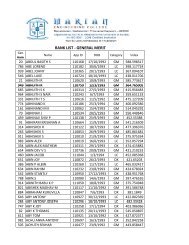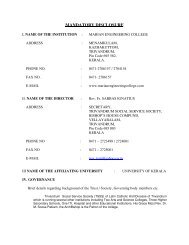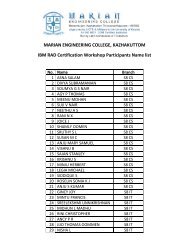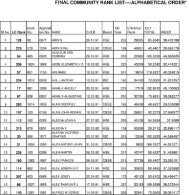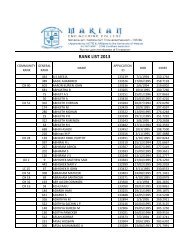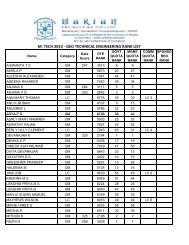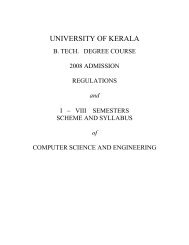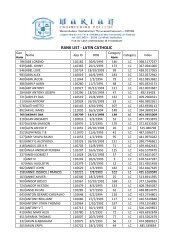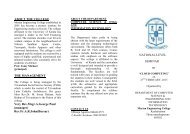UNIVERSITY OF KERALA - College of Engineering, Trivandrum
UNIVERSITY OF KERALA - College of Engineering, Trivandrum
UNIVERSITY OF KERALA - College of Engineering, Trivandrum
You also want an ePaper? Increase the reach of your titles
YUMPU automatically turns print PDFs into web optimized ePapers that Google loves.
08.606. 10 Elective II NATURAL DISASTER<br />
MANAGEMENT<br />
L T P/D Cr<br />
3 1 0 4<br />
Module I<br />
Earth processes and natural disasters-significance <strong>of</strong> earth processes, natural hazards, risks and disasters. Basic<br />
principles <strong>of</strong> disaster management. Case histories <strong>of</strong> important natural disasters. Vulnerability assessment for<br />
earthquakes, floods, tsunamis, landslides and volcanoes. Human induced disasters.<br />
Module II<br />
Preparedness and mitigation measures for earthquakes, floods, tsunamis, landslides and volcanoes with special<br />
reference to construction <strong>of</strong> residential buildings and public utility buildings. Disaster mitigation planning <strong>of</strong><br />
human settlements and townships for earthquakes, floods, tsunamis, landslides and volcanoes.<br />
Module III<br />
Issues in the prediction <strong>of</strong> natural disasters, land use practices and disaster mitigation. Integration <strong>of</strong> rural<br />
development programmes with natural disaster mitigation and planning. Information systems and decision<br />
making tools in disaster management. Disaster management in India.<br />
References<br />
1.Abbott, P.L(2001) Natural Disasters. 3 rd Ed., McGraw Hill Company<br />
2 Bryant,E.A(1991) Natural hazards. Cambridge University Press.<br />
3.Murty, C.V.R. IITK-BMTPC Earthquake Tips, National Information centre <strong>of</strong> Earthquake <strong>Engineering</strong>,<br />
IIT-Kanpur ,P.56<br />
4 Ramakant G aur(2008) Disaster management. GNOSIS, New Delhi, P. 172.<br />
Question paper:<br />
Duration: 3 Hrs<br />
The Question paper consists <strong>of</strong> Part A and Part B.<br />
Part A carries 8 compulsory questions (short answer questions) covering the entire syllabus and is for 40<br />
marks.<br />
Part B is for 60 marks. There will be two questions from each module. The candidate has to answer one<br />
question out <strong>of</strong> two.<br />
Note: No charts, tables, codes are permitted in the Examination hall .If necessary relevant data shall be given<br />
along with the question paper by the question paper setter.<br />
68



